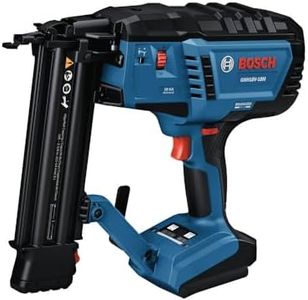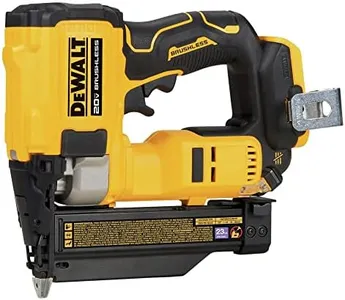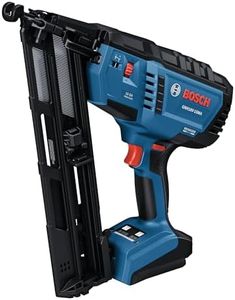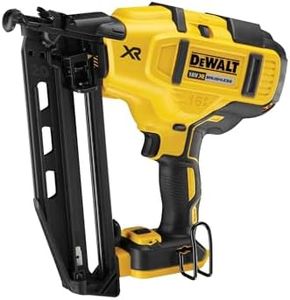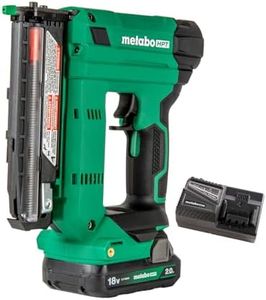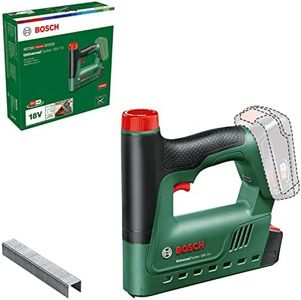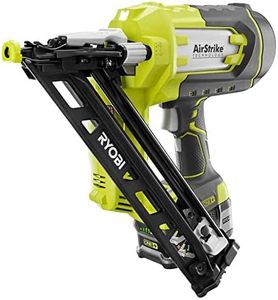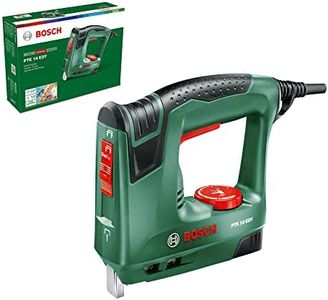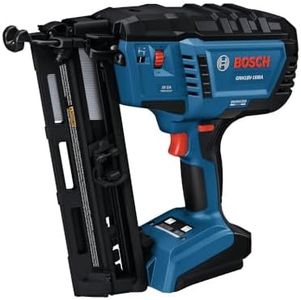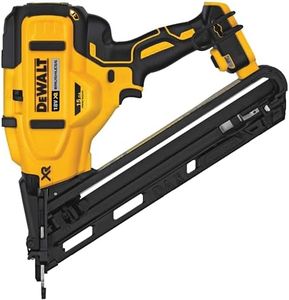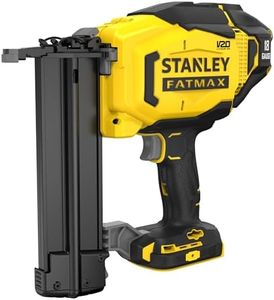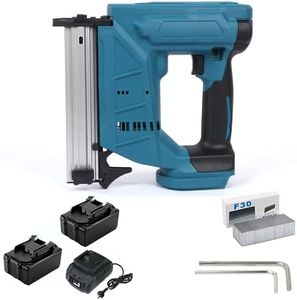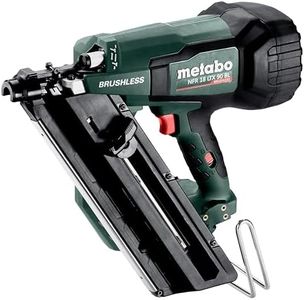We Use CookiesWe use cookies to enhance the security, performance,
functionality and for analytical and promotional activities. By continuing to browse this site you
are agreeing to our privacy policy
10 Best Cordless Finish Nailers
From leading brands and best sellers available on the web.Buying Guide for the Best Cordless Finish Nailers
Choosing a cordless finish nailer can make your woodworking and trim projects quicker and less cumbersome, sparing you the hassle of hoses and compressors. To find the best fit, it's important to consider how you'll use it—evaluate what projects you tackle most, your comfort level with tools, and whether you value portability, power, or ease-of-use the most. Understanding the main specifications will help you pick a tool that matches both your current needs and your future ambitions.GaugeThe gauge of a finish nailer refers to the thickness of the nails it fires. Lower numbers mean thicker nails, while higher numbers are thinner. Common gauges for finish nailers are 15, 16, and 18. A 15-gauge model offers stronger holding power for heavy trims and doors, but leaves a slightly bigger hole. A 16-gauge balances holding strength and finish, suitable for wide trim and baseboards. An 18-gauge finish nailer (often called a brad nailer) is best for delicate trim and fine detail work, leaving tiny holes and minimizing wood splitting. Choose the gauge based on the size and delicacy of your projects—thicker nails for heavy-duty needs and finer gauges for more visible, detailed work.
Nail Length RangeThis tells you the shortest and longest nails the tool can use. Nail length impacts how well you can secure different thicknesses or types of material. Shorter nails (around 1 inch) are ideal for thin trim work, while longer nails (up to 2.5 inches or more) are better for attaching thicker moldings or wood to studs. If you plan to work on a variety of projects, a wider nail length range provides more versatility. Match the nail length range with the demands of most jobs you expect to do.
Magazine CapacityMagazine capacity denotes how many nails you can load at once. Larger capacities mean fewer reloads during big projects, saving you time and hassle. Smaller magazines can make the tool lighter and easier to handle, which is helpful for small jobs or working in awkward spaces. If you frequently take on longer projects, a higher magazine capacity can boost your efficiency. But if you prioritize maneuverability, a smaller capacity might suffice.
Battery Type and RuntimeCordless finish nailers run on rechargeable batteries, with lithium-ion batteries being the most common. Battery runtime determines how long you can work without needing to recharge or swap out. Larger batteries generally mean longer runtime but add weight. Consider how long your typical work session is—if you work on big projects or hate interruptions, a tool with longer battery life or a backup battery capability is important. For shorter or occasional use, shorter runtimes may be acceptable for a lighter tool.
Depth AdjustmentDepth adjustment lets you control how deep the nail is driven into the wood. This is essential for preventing nails from sticking out or sinking too deep. Most cordless finish nailers offer tool-free depth adjustment, making changes quick and easy. Look for user-friendly systems if you frequently switch between materials. If your work involves lots of different wood types or thicknesses, easy and precise depth adjustment will save you time and improve your results.
Weight and ErgonomicsThe tool’s weight and design directly affect your comfort, especially during extended use. Lightweight models are easier to handle, particularly when working overhead or in tight corners, but heavier units may sometimes offer more stability with less recoil. Ergonomic grips and balanced weight distribution add to comfort and control. Consider what feels comfortable in your hand and how long you expect to use the tool at a stretch—choose a weight and shape that matches your physical needs and working style.
Jam Clearing MechanismNail jams can happen with any nailer. A good jam clearing mechanism allows you to quickly and easily clear jams without needing special tools. This minimizes downtime and frustration. If you’re new to nailers or working on time-sensitive projects, a tool-free jam clearing system is particularly helpful. Frequent users will appreciate this feature for its simplicity and efficiency, improving your workflow overall.

